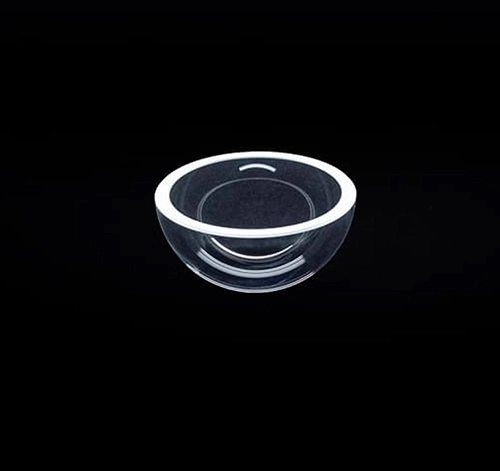An Optical Domes is a special optical element, usually spherical or hemispherical, used to protect an optical sensor or imaging system from the outside environment while allowing light to pass through. These domes are widely used in a variety of fields, including but not limited to Marine exploration, aerospace, security monitoring, environmental monitoring and high-speed photography.
An optical dome is a hemispherical component that serves as a protective cover for precision optical systems, including cameras, sensors, and other delicate instruments. Made from transparent materials such as glass, acrylic, or crystalline substances, optical domes are designed to offer minimal optical distortion while providing robust physical protection against environmental factors like dust, water, and impact. Their unique shape allows for a 360-degree unobstructed view, making them ideal for underwater photography, aerospace applications, and surveillance systems. The curvature of the dome is carefully engineered to ensure optimal light transmission from all angles, enhancing the overall performance of the optical system it shields.

Optical domes are incredibly useful due to their ability to provide unimpeded protection and clear optical paths for delicate sensors and imaging devices across a range of applications. Their hemispherical design ensures that light can enter from all angles with minimal optical distortion, which is crucial for devices requiring high levels of accuracy, such as underwater cameras, drones, and environmental monitoring equipment. The material used in optical domes, typically glass or acrylic, offers robust protection against environmental hazards like water, dust, and impacts while maintaining optical clarity. This combination of protective qualities and optical precision enhances device performance and reliability in challenging conditions.
Optical domes exhibit several critical characteristics that make them indispensable in many advanced optical applications. Firstly, they provide a wide-angle field of view with minimal optical distortion, allowing for clear and accurate imaging across various angles. This is essential for applications requiring panoramic or comprehensive environmental observation. Secondly, optical domes are made from materials like glass, acrylic, or crystalline compounds, which ensure high transparency and excellent durability against environmental stresses such as water pressure, wind, and debris. Additionally, these materials can be treated or coated to enhance their resistance to scratching, fogging, and UV damage, further maintaining optical clarity and integrity over time.

 Call us on:
Call us on:  Email Us:
Email Us:  No.9 Zhongxing East Road, Lishui Economic Development Zone, Nanjing, Jiangsu, China
No.9 Zhongxing East Road, Lishui Economic Development Zone, Nanjing, Jiangsu, China